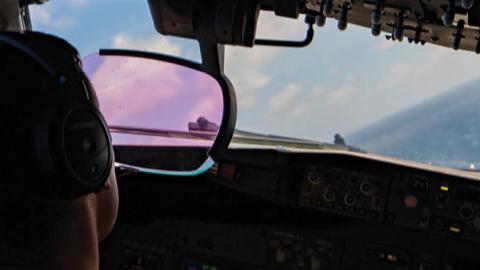Submarines have posed a challenge to naval forces for more than a century, enabling weaker maritime powers to launch surprise attacks ashore or cut an opponent off from the sea. But submarine threats, and the difficulty of countering them, increased substantially for the United States and its allies during the past decade. The Chinese People’s Liberation Army Navy (PLAN) is modernizing its fleet with conventional air-independent propulsion submarines (SSPs) that support its broader sensor and weapon networks. It is also fielding nuclear-powered attack submarines (SSN) and ballistic missile submarines (SSBNs) capable of longer or more distant deployments. New generations of Russian Federation Navy (RFN) SSNs are difficult to track and could be employed for conventional or nuclear strikes during a conflict. Both countries are augmenting their submarine fleets with large autonomous underwater vehicles (AUVs) incorporating submarine like capabilities. Modern submarine technology has also proliferated, with the North Korean and Iranian navies using submarines and AUVs to level the playing field with their larger regional competitors and the United States.
Unfortunately, the current US and allied approach to antisubmarine warfare (ASW) is unlikely to cope with the probable scale of undersea threats in a crisis or conflict. US Navy ASW concepts rely on fixed seabed sensors such as the Sound Surveillance System (SOSUS) or Surveillance Towed Array Sensor System (SURTASS) ships to detect and initially track submarines. Multiple maritime patrol aircraft and guided missile destroyers (DDGs) then track each adversary submarine before potentially passing it to an SSN for longerterm surveillance. This approach works when opposing submarines deploy infrequently but is likely to break down during a large-scale submarine deployment or as submarines become quieter and harder to track. When manned platforms and expendables such as sonobuoys or torpedoes run out or are needed elsewhere, ASW operations will necessarily collapse to a defensive strategy protecting high-value targets, instead of suppressing enemy submarine operations closer to the adversary’s waters. This may result in unlocated adversary submarines operating in the open ocean, where they could threaten US and allied shipping and maritime operations.
US and allied ASW concepts are also expensive, requiring significant manpower and tying up multi-mission platforms like DDGs and SSNs that are needed elsewhere for other operations such as air defense or anti-surface warfare. These approaches may be unaffordable in a period of flat or declining defense budgets and would likely be unsustainable during confrontation or conflict against a capable submarine force. To address the rising submarine threat, US and allied militaries need a new approach to ASW that is more affordable and effective.
Leveraging Mature Unmanned Technologies
The US Navy and allied navies can regain an ASW advantage by adopting ASW concepts that focus on offensive ASW operations and rely primarily on unmanned systems for finding, tracking, and suppressing enemy submarines. Mature technologies for autonomous vehicles, deployable sonars, automated acoustic processing, and communications networking are creating new opportunities for submarine detection, tracking, and engagement. Combined with new, more offensively oriented ASW strategies and tactics that exploit submarines’ inherent vulnerabilities, these technologies could allow ASW forces to suppress and marginalize submarines with greater effectiveness and at lower cost than today’s predominant ASW concepts. This approach would free US SSNs to focus on engagement and destruction of enemy submarines when needed, rather than being tied up in ASW search and track.
A new unmanned ASW systems of systems would consist of the elements summarized in figure 1. If the US Navy and allied navies adopted more sustainable and risk-worthy unmanned systems, ASW operations could concentrate on choke points and an opponent’s home waters. This would reduce the threat in open ocean or enable more effective monitoring of submarine deployments to allow rapid attacks on them when competition turns to conflict. Each phase of the proposed ASW approach is described below:
Cueing and Detection: Several types of sensors would detect submarines as they pass through choke points and likely transit lanes: fixed sensors such as SOSUS; electronic intelligence (ELINT) or electro-optical/infrared (EO/IR) satellites; relocatable sensors, such as the transformational reliable acoustic path sensor (TRAPS); and mobile sensors, such as passive sonar arrays towed by glider unmanned surface vessels (USVs) or extra-large unmanned underwater vehicles (XLUUVs) and SURTASS arrays towed by medium USVs (MUSV). Unmanned passive sonars would use automated target recognition algorithms, increasingly augmented with machine learning (ML), to identify specific submarine or surface contact frequency tonals from the overall ocean noise.
Tracking: Cued by detection sensors, MUSVs with towed active or passive sonars would continue to track adversary submarines. To reduce the threat to search platforms, active sonar would be employed multistatically, with an MUSV serving as the transmitter and passive sonar arrays towed by manned or unmanned platforms receiving the returns. To further localize or identify submarines, medium-altitude long endurance (MALE) unmanned aerial vehicles (UAVs) like the MQ-9B SeaGuardian would deploy sonobuoys, scan the ocean with mast detection radars and employ passive SIGNIT capabilities to detect electromagnetic transmissions. Search and track by unmanned systems would be complemented by fixed or deployable undersea sensors, existing SURTASS ships, or other vessels of opportunity with towed arrays.
Trail: A significant limitation of today’s ASW approach is it cannot scale to address more than a few adversary submarines at a time after they leave chokepoints and deploy into the open ocean. During wartime enemy submarines would be engaged before they leave chokepoints, but an opponent may sortie undersea forces before a planned offensive to create an open-ocean ASW demand on US and allied forces and a potential threat to sea lanes or US and allied home territory. To address this challenge the proposed ASW concept would employ MUSVs towing active and passive arrays and MALE UAVs with radar, EO/IR, and visual sensors to loosely trail opposing submarines in the open ocean. Maintaining trail on submarines outside their home waters enables them to be more quickly engaged when conflict begins and simplifies the homeland defense ASW task by providing cueing from the trailing ASW sensor platforms.
Engagement: When conditions warrant, ASW engagements would prioritize suppression of submarines over destruction, based on lessons from the First and Second World Wars and the Cold War. MALE UAVs would conduct suppression attacks using small, inexpensive, air-launched torpedoes such as the compact very lightweight torpedo (CVLWT), depth bombs like the Second World War–era Hedgehog, or rocket-propelled depth charges like the Russian RPK-8. Alternatively, MUSVs in trail could close on the target submarine at acceptable risk and launch short-range standoff ASW weapons such as anti-submarine rockets (ASROCs) with a CVLWT or depth bomb payload. The smaller warheads of CVLWTs or depth bombs are less likely to destroy a submarine outright but could disrupt its operations by forcing it to evade or damage the target submarine and make it easier to track. Applying lessons from the Second World War’s hunter-killer groups, less-expensive and more numerous unmanned vehicles could also collaborate to track and repeatedly engage submarines, increasing the eventual probability of destruction.
When submarine destruction is necessary to impose greater costs or reduce the long-term threat, ASW attacks would focus on locations such as choke points, where unmanned systems could employ larger, more lethal weapons effectively. XLUUVs carrying heavyweight torpedoes and mines, such as the developmental Hammerhead mine, would be positioned outside ports, straits, and other choke points to engage transiting submarines. US and allied attack submarines would often be needed for higher-value missions such as anti-surface warfare or strike, but they would be employed for ASW against opposing SSBNs to compel the adversary to use its own attack submarines for pro-SSBN operations.
Command and control (C2): The unmanned ASW concept would employ a C2 approach combining human command with machine control. Unmanned search and track operations in an adversary’s home waters and at choke points would be highly automated, with sensors following search plans developed and modified in real-time by AI-enabled tools to reduce operator workload. Human operators deployed to the region or would manage offensive ASW operations by reviewing search plans before and during an operation, providing direction and guidance to the autonomous control systems and overriding them when necessary. Search plans would be approved by human commanders, who would also direct engagements. Operators and commanders could also manage unmanned ASW missions remotely from US territory in situations where host nation access may not be available, as could happen during far-forward ASW operations in the Black Sea or Persian Gulf.
P-8A maritime patrol aircraft would host operators to locally manage ASW operations in uncontested or moderately contested areas to ensure communications with unmanned systems and provide additional sonobuoy or weapons capacity. For C2 in contested airspace, operators could coordinate ASW operations via UAV-borne communication relays or satellites from ships or mobile ground-based C2 cells containing the P-8A processing and control systems. Human command and machine control would be more effective than either an all-manned or all-unmanned force and would focus highly skilled crews and their platforms on cognitive tasks and episodic action, rather than continuous search and track activities.
Offensive ASW operations like those described above should be the focus of US and allied ASW strategy, keeping adversary submarines bottled up in their local waters or busy evading tracking or attack. However, if offensive operations are unsuccessful or overcome by submarine numbers, unmanned ASW systems of systems would enable maritime formations to disrupt enemy submarine attacks.
Implementing an Unmanned ASW Approach
Unmanned concepts would increase the US Navy’s ASW capacity, make it more scalable, and improve its cost and sustainability over time. This report assessed force structure requirements to detect and track adversary submarines in a set of scenarios involving China and Russia. In each case, adversary submarines attempted to transit through straits in the Western Pacific or the Greenland, Iceland, United Kingdom (G-I-UK) gap and reach naval forces in the open ocean. Figure 2 summarizes the procurement and operations and support (O&S) costs associated with the current and proposed ASW concepts for one month in the China and Russia scenarios.
The comparison is not meant to imply that manned platforms like DDGs, SSNs, or P-8As are not needed. These platforms are still needed for ASW C2, and more importantly, for operations where their multi-mission capabilities and onboard operators are more essential. Instead, the argument conveyed by Figure 2 is that the unmanned ASW approach would not require the Navy to divest of manned platforms because the new concept could pay for itself with O&S savings from less than a year of sustained ASW operations.
The technologies used for the unmanned ASW approach are all in existence today, although some are not yet being employed operationally in the form proposed by this report. To provide time to mature these technologies, the unmanned ASW approach would be implemented over 5 to 10 years, substituting manned platforms with unmanned systems over time in day-to-day and responsive ASW operations. In the process, manned US Navy platforms such as P-8As, DDGs, and SSNs would be freed to conduct other operations or to focus on C2 of ASW operations.
To enable a more rapid adoption of this approach, procurement funding could be shifted from a few manned platforms to buy the needed portfolio of unmanned systems. Arguably, a slight deceleration in manned platform procurement could be justified by the ability to conduct ASW with unmanned systems. For example, by reducing procurement over the next several years by one FFG, one DDG and one SSN, the Navy could field the ASW portfolio of unmanned sensors, platforms, and expendables shown in table 1. Some aspects of this particular trade may not be desirable for industrial base or other reasons, but it illustrates the relatively modest change in investment needed to adopt an improved ASW concept.
A Closing Window for Transition
US and allied militaries should begin the shift now to unmanned-centric ASW concepts and increase their investment in unmanned ASW sensors and platforms. These and other technologies described in this report are mature and are being used by US or allied navies, or they are rapidly reaching maturity and can help create a force that is much more affordable, scalable, and effective.
However, the United States and its allies face a short window of opportunity. There is a risk that rising procurement and O&S costs for the current manned ASW portfolio and flat or declining budgets will prevent the adoption of new ASW concepts or investment in new unmanned systems. If US and allied navies fail to act during the next several years, they could lose their undersea advantage to surging fleets of adversary submarines.
__Photo caption: A pilot with the “Grey Knights” of VP-46 flies a P8-A Poseidon during intelligence surveillance reconnaissance drills on July 17, 2020. At the time of this photo, VP-46 had recently transitioned from the P-3C Orion platform to the P-8A and was preparing for an upcoming deployment to the 6th Fleet Area of Operations.__




















